#Ladies Scottish Climbing Club
Text

Members of the Edinburgh Ladies’ Climbing Club, circa 1908. “This photo shows Lucy Smith and Pauline Ranken climbing on Salisbury Crags in Edinburgh. Smith was one of the founder members of the Ladies Scottish Climbing Club; the other two founders were Jane Inglis Clarke (1859-1950) and her daughter Mabel. They formed the club in 1908 because as women, they were barred from joining the men-only Scottish Mountaineering Club.” (Photo by Historical Photos of Women’s Stories)
14 notes
·
View notes
Text
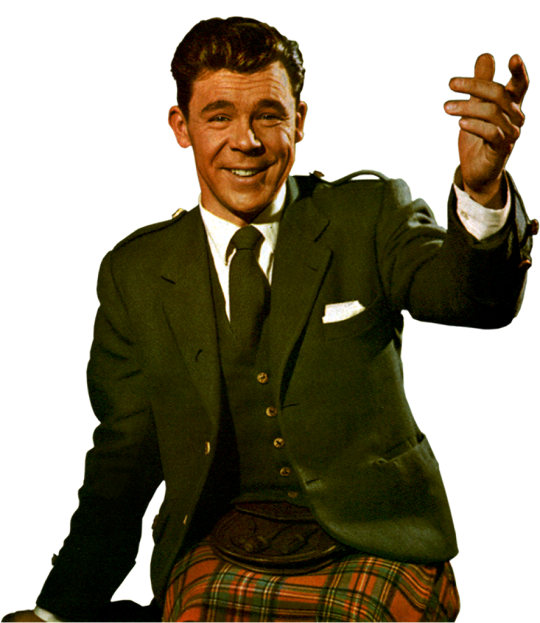

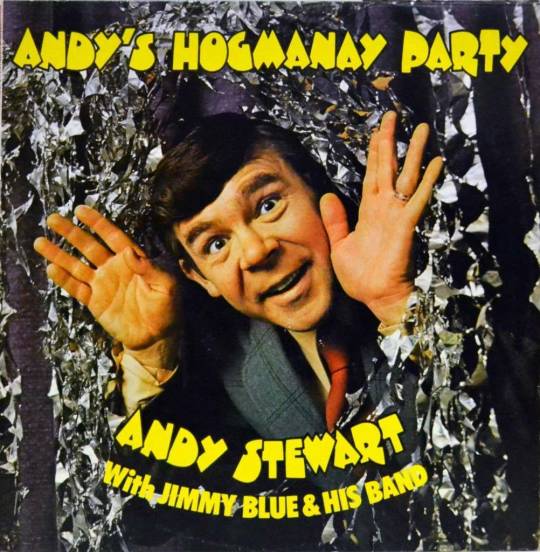
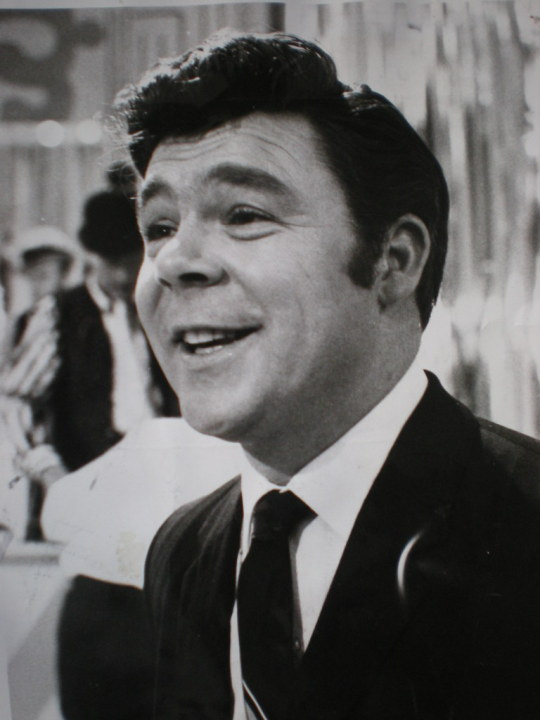
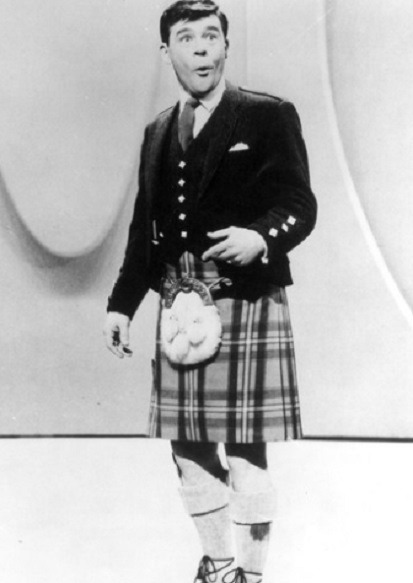

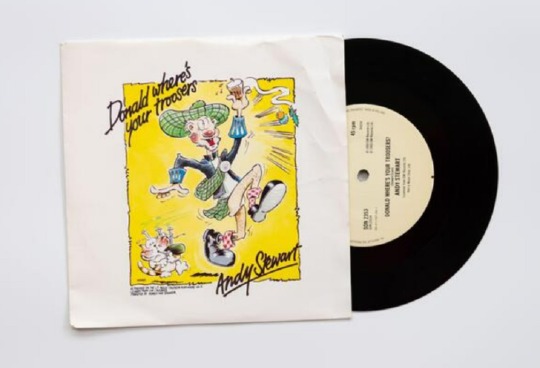
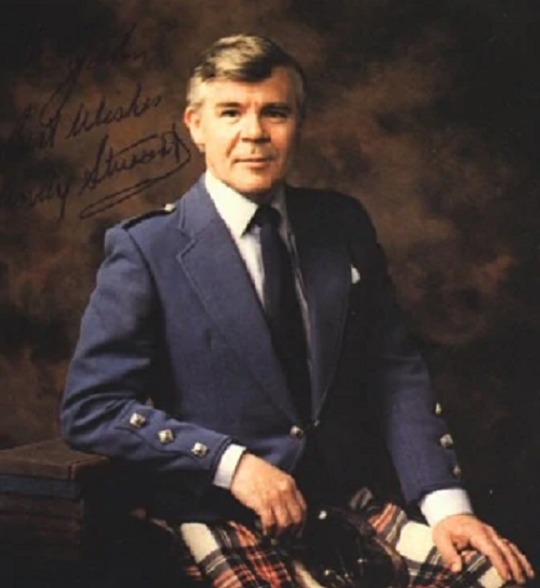

Andrew (Andy) Stewart, one of Scotland’s best loved entertainers was born on December 30 1933 at Redlands Hospital for Women, Great Western Road, Glasgow.
Andy was born in Glasgow, and had aspirations of becoming a veterinary surgeon, although following a performance in a local pageant he decided to train as an actor at the Royal Scottish Academy of Music and Drama.
He became a successful recording artist, with international hits such as Donald Where’s Your Troosers? A Scottish Soldier, The Road to Dundee and Take Me Back, and found further fame as the compere of BBC Scotland’s The White Heather Club, which ran for several years from the mid-1950s.
From the early 1960s onwards, he frequently and successfully toured Canada, the USA, Australia and New Zealand.
In 1959, Andy Stewart signed his first recording contract with the small the label of Top Rank. His first recording, “Donald Where’s Your Troosers?” was a light-hearted, almost throwaway track, during a recording session with his White Heather Group. However Top Rank considered it worth releasing as a single.
“Donald Where’s Your Troosers?” is a comic song about a Scotsman who wears a kilt rather than trousers. It plays on the traditional gag about what people might see when a man is wearing a kilt and not any underwear. Especially when it is windy while walking in a kilt. As such he impresses the ladies when he walks by, frightens the other Highlander men and has rolls in the hay with lassies from London. The song also includes an Elvis imitation of several of the verses near the end of the song. Legend has it Elvis said it was one of the best impersonations of himself he had heard.
Stewart wrote the song in 10 minutes while he sat, trouserless, in the loo of a recording studio. Back in 1960’s Andy Stewart and other Scottish comedians were heard to tell a joke at the time reflecting Scots making fun of themselves: What’s the difference between a Scotsman and a Rolling Stone? A Rolling Stone says, “hey you, get off of my cloud!,” while a Scotsman says, “Hey McLeod, get off of my ewe!”
Into the 1980’s Andy Stewart was becoming a symbol of the “Old Scotland” for many Scots who were embarrassed by perpetual images of haggis, Hogmanay and kilts as representing Scotland. He spent much of the decade touring internationally. But in 1989 “Donald Where’s Your Troosers?” was reissued and climbed to 4 on the charts. Stewart was back in fashion, including in Scotland.
During his career Andy Stewart released 26 studio albums and one live album.
Plagued with ill-health most of his adult life, especially due to high cholesterol levels, Stewart died at the age of 60 in 1993.
Since his death over a have a dozen compilation CD releases have been made available to showcase the work of one of Scotland’s greatest entertainers.
There's a full web page full of stuff about Andy, with plenty links to a dedicated Youtube page at the link below.
20 notes
·
View notes
Text

Members of the Edinburgh Ladies’ Climbing Club, circa 1908. “This photo shows Lucy Smith and Pauline Ranken climbing on Salisbury Crags in Edinburgh. Smith was one of the founder members of the Ladies Scottish Climbing Club; the other two founders were Jane Inglis Clarke (1859-1950) and her daughter Mabel. They formed the club in 1908 because as women, they were barred from joining the men-only Scottish Mountaineering Club.” (Photo by Historical Photos of Women’s Stories)
18 notes
·
View notes
Text
Who was the first woman to climb Kilimanjaro? Have you heard of her? Well, her name was Sheila Macdonald and I’d never heard of her either, until a few months ago. My then colleague, Stu Kenny, did an interview with Paula Williams, the curator of the Petticoats and Pinnacles exhibition at the National Library of Scotland. This led him to write an excellent piece about a Scottish mountaineer who didn’t quite make it into the exhibition: Sheila Macdonald.
When I proofread the article, I found Sheila fascinating. She was born in Australia in 1901 and was the daughter of Claude Macdonald, vice-president of the Alpine Club. She climbed in Scotland and the Alps; had summitted Mount Etna; and climbed Stromboli - an active volcano - rowing an open boat across a stormy sea to get away. She never set out to climb Kilimanjaro: she was meant to be visiting her cousin in Kenya. But she met a gentleman in an Alpine Club tie, Mr West, on the ship to Africa and joined his expedition instead.
Stu had found it challenging to uncover good and accurate information about the expedition, with a fair bit of misreporting in newspapers. But I wished that I could read a book about this awesome lady. So I started my own investigation, out of pure curiosity. On the way, I thought, “What about the Alpine Journals?” If her father was vice-president of the Alpine Club then surely someone would have mentioned her climbing Kilimanjaro. Even if women weren’t allowed to be members at the time.
A bit of a rummage and I found it: an expedition report written by Sheila Macdonald herself. The following extract is reproduced by the kind permission of the Alpine Club from their Alpine Journal archives.
KILIMANJARO IN 1927. By Miss SHEILA MACDONALD.
[The substance of this account is contained in a letter to Mr. Claude and Mrs. Macdonald, to whom we offer our best thanks.- Editor ‘A.J.’]
MOSHI, TANGANYIKA TERRITORY, August 2, 1927.
Mr W. C. West of the Alpine Club and I have climbed to the top of Kilimanjaro, and no woman has ever succeeded in getting there before. Kilimanjaro consists of two mountains - Kibo (19,710 ft) and Mawenzi (17,300 ft), separated by a 6-mile plateau. Mr. West and I and Major O. Lennox-Browne climbed Mawonzi first, choosing our route as we went, at least Mr. West did, and got to the highest point which had been reached by two German parties, both in 1912. We found their names and records in an old tin built into the cairn and added our names on the same piece of paper.
Our camp was at the foot of Mawenzi, but we could not stand the height for two nights running, and had to descend to 12,700 ft again before attacking Kibo. Mr. West and I were the only two to reach the top of Kibo, as Major Lennox-Browne, who suffered from the altitude, could go no further than three quarters of the way up. I never knew that mountain sickness and lack of oxygen could be so awful. And now I had better start from the beginning, as otherwise half the account will be left out.
The three of us joined together at Mombasa and came straight on here, branching off the main line at Voi. At Voi we got a ‘water train’ to Moshi, the only conveyance for nearly a week. It stopped every four miles to distribute water at wayside halts, and we travelled all day on the footboards - eight hours, and arrived at Moshi looking like Red Indians from the red dust. Here we stopped the night and just long enough next day to collect provisions, a cook and a personal boy. Then we travelled for two and a half hours on a Ford lorry with our camp equipment all about us, through scrub and up and down gullies-a most amazing road. I sat next to the native driver, and he was the best thing in chauffeurs I have ever seen-nothing abashed him, we took logs and ravines in our stride.
We got to Marangu in the evening and interviewed Mlanga, the Chief of the Wachagga, who was to provide us with fourteen porters to take our stuff to the highest hut on the mountain. He gave us eggs, milk and a leggy fowl, and I gave him a postcard of Kilimanjaro. He let us camp in front of his Council House. All our porters were rounded up by him, he sent out his ‘Royal Crier’, a picturesque gentleman in a blanket, who called the tribe together by making strange noises on a koodoo horn.
From Marangu we climbed up to Bismarck Hut through dense forests very much like those Knysna forests in South Africa, but more tropical - amazing creepers and lots of signs of elephant. Bismarck Hut suffered a lot during the fighting with Smuts, etc, but still offered the shelter of thick walls and a tin roof. It is high up on the mountain with a wide view of the plain, copper-coloured in the sun, while we were in shadow and mist in the middle of the cloud-belt which always encircles Kilimanjaro. This is one of the things that make the mountain so wonderful. It rises straight from the plain in one sheer mass, but the base of it is always separated from the top by this circle of mist and fleecy cloud, so that the great dome of smooth snow looks completely detached from the earth like a great moon hanging in heaven, especially at night when it looks too beautiful for description.
We left Bismarck Hut on July 27, and got above the cloud-belt into the sun again through a district of sweet-smelling shrubs, protea, giant heather and gladioli to Pieters Hut, where we turned in on very comfortable grass bunks. We saw plenty of elands standing as high as cattle. Major Lennox-Browne and I crawled towards a herd on our tummies with great success, while Mr. West (otherwise the ‘Skipper’) diverted their attention with his white helmet. We got near enough to take a photo when one of the porters dropped his load; it crashed down into the undergrowth and frightened the creatures away. We all sat outside the hut trying to spot animals with field-glasses. I found a big shaggy brown thing like a grizzly bear and distinctly saw it wag its tail, but in the morning it turned out to be an ant-hill.
The way from Pieters Hut to the foot of Mawenzi leads over rough country and crosses a corner of the plateau. We put up our tents near the foot of our proposed climb and spent a very cold night in them. In the morning, tea, ink and the Skipper's mixture of whisky and lime juice were all frozen ice. I was feeling giddy and headachey, Mr. West was violently sick and could not eat. The difficulty about Mawenzi is that there is such a mass of pinnacles and jagged ridges that the highest point is impossible to distinguish except from high up on Kibo. Several people have been up and thought themselves on the summit, discovering later that they had been on a minor peak.
It is the most lovely mountain for climbing; the difficult part was the first half before we got into the couloir that leads to the top. We used the rope for a few difficult steps leading up into the NW gully. This gully reaches almost to the top, broken by one sheer wall, where we had to climb out on to the righthand side of it again. There were excellent hand and footholds, mostly alternating with exhausting slopes of scree and loose rocks. At the top of the gully were three pinnacles, which seemed to us of equal height.
We found the cairn and records of the two German ascents on the most southerly and insignificant looking of the three pinnacles. This is Hans Meyer Spitze (17,300 ft). We rested here a few minutes and shuddered at the tremendous drops on the E side of the mountain. The summit is split into jagged pinnacles of every size, some of them only a few feet thick and piled to heights of 40 and 50 ft. From them precipices drop to sheer depths of thousands of feet.
We had meant to go straight from Mawenzi to Kibo, but decided that it was worth going down to Pieters Hut to have a good rest in between, especially as Mr. West was really suffering from the height, so we had a cup of Bovril each when we came down from Hans Meyer Spitze at 5 pm, and started back for Pieters Hut, getting there at 8 pm. Major Lennox-Browne was rather seedy, and suggested a day's rest, which we had and enjoyed, though I rather wanted to have a ‘go’ at Kibo while keyed up to the struggle.
So Friday was a slack day, and on Saturday, July 30, we climbed up to the plateau again and made for the foot of Kibo, where there is a cave (Hans Meyer's Höhle), where we meant to spend part of the night. The plateau was a horrid grind, slightly uphill all the way, drifting sand and the wind in our faces. When we got to the other side we discovered that the four porters we had chosen for the last lap to the cave did not know where it was, so we hunted about the rocks until I found a beauty, well sheltered, with a sandy ground- ‘The Sheila Cave’ this is to be called. We turned in while the boys built a large fire in the entrance.
Mr. West 's idea was to start the climb at midnight, so as to get to the top at sunrise, before the heat of the sun made the ascent too difficult in soft snow. However, we only had a lantern, which was quite inadequate; it went out five times before we decided to wait till daybreak and risk the soft snow at the top. We settled down in the scanty shelter of a rock and waited 3 hrs for light to come; then started the most awful climb for hours upon loose rocks, stones and sand; everything you put your foot on slipped back with you, and after 3 hrs’ hard climb we looked up and seemed to have made no progress.
At first we rested every hour, but at about 18,000 ft we dragged ourselves for about 20 ft at a time with stops between each bit to get our breath in working order. However much one gasped and panted, nothing seemed to get into one's lungs. I was rather ahead of the others, because I had found some firmer rock at about 800 ft from the crater's rim. When I found that the others were not following I cooeed several times, and finally Mr. West came round a mass of rocks - by himself! Major Lennox-Browne was completely finished, and could not go a step farther. I can't understand how Mr. West could keep going, when he had been sick and dizzy with nausea. I think he was feeling rather weak just here, though he didn't give in.
Well, up to this point I had been wondering several times how long I could stick it out, but I braced myself up and was comforted by feeling that I was not the weak one of the party. Mr. West and I had a good dose of whisky and lime juice out of our drinking bottle, pulled ourselves together, and went on. We reached the crater's edge at Johannes Notch, and bore round to the left, past Stella Point (reached by the Kingsley-Lathams last year) and on round the crater to Kaiser Wilhelm Spitze, the highest point, reached once before by Mr. West, in 1914, when he was the first Englishman to make the ascent.
We crawled to the summit foot by foot. I am not being dramatic, it really was like that. It was just in front of us, and I thought we should never get there. You can't imagine the relief of leaning up against the cairn and realizing that we were there. We inscribed our names in the pocket-book that is hidden in the cairn, and split a bottle of champagne carried all the way from Moshi for the occasion. We had poor Major Lennox-Browne's share as well, but unfortunately had to drink out of the bottle and got very little but fizziness - better than nothing, though.
Several women have reached the crater's rim, but very few people have been beyond - no women. The inside of the crater is amazing. Imagine a huge bowl of ice with hanging glaciers all round its inside walls and two great lakes of greeny-blue ice at the bottom of it, huge crevasses and seracs around its rim. I have never seen anything like it. The cold made it impossible to stay up there for long, so we took one or two photos and followed our tracks back to the crater's rim.
The way down was ridiculously easy; we just ‘glissaded’ down steep slopes of lava-dust and small stones, and it took us less than 2 hrs, though we took a wrong turning near the bottom and found ourselves in a narrow gully with a sheer cliff at our feet, dropping a good 80 ft to the plateau. So we retraced our steps again (more upward scrambling!), reached our cave just in time for a 20 minutes' rest and a cup of tea before starting on the 4 hrs' tramp to Pieters Hut again - anything for comfortable grass bunks and a good night's rest.
Darkness overcame us on the way, and we got lost and had to squat down where we were, with a huge fire lit as a signal to the boys at the hut. They found us at about 10 pm and led us to Pieters Hut with great torches of sweet-smelling shrub. There was much waving of branches to make the sparks fly. What a day! and the next morning we had to walk 25 miles to Marangu; dropping 8000 ft in 7 hrs.
So now it is done, and I would not have missed it for the world, though I cannot say I ever want to do Kibo again. Mawenzi I should like to do dozens of times. We have a lorry to take us and our luggage to Nairobi to-morrow, about 250 miles, as the train does not go until Saturday. You cannot imagine how splendid Mr. West has been on this expedition, always cheerful and most optimistic. The boys loved him, and he always managed to get things done, though none of them spoke a word of English, and all we could say in Swahili was ‘tea’, ‘coffee’, ‘water’ and ‘prepare food’.
__
The report is then followed by a commentary from Mr West, refuting claims that other women had summitted first. It seems there was quite some controversy at the time. It also contains a few black and white pictures of what Kilimanjaro used to look like. You can view it on the Alpine Journal Archive 1928 Vol 40.
#kilimanjaro#climbing history#climbing#women in history#women climbers#women in sport#female athletes#Sheila Macdonald#alpine club
7 notes
·
View notes
Text
Bridge 63, South Bridge, Edinburgh
Bear with me on this, it’s a bit complicated, especially if you are not familiar with the fine city of Edinburgh. The word “burgh”, usually now understood to mean town, originally meant fort, and that is what Edinburgh was. It provided a grand place for a fort, high on a precipitous ridge of rock, surrounded by other ridges, with water between them, so the only access to the castle for ages was a steep road along the top of the ridge, now the Royal Mile. So, easy to defend. Nevertheless, after the muddy defeat of the Scottish at Flodden Field, the Edinburgh residents felt nervous enough to build a wall around their town. This all made it very difficult to expand. The people who wanted to live in the growing town had nowhere to build their houses but the steep sides of the ridges. Because of the severe shortage of land for building, and possibly to see the amazing views, they built tall tenements. Eventually, even tough Scottish folks got fed up with trudging up and down the narrow paths between them, and then having to face several flights of stairs to the front door. So, bridges were needed to get from the top of one ridge to the top of the next, but all the space was full of tenement buildings, which were full of people. The only possibility was to build the bridges along the lines of paths between the tenements, at about the level of the third floor, leaving the lower floors in the arches of the bridge, and completely cut off from access to the outside, and daylight. Such as there is in Scotland.
South Bridge was designed by Robert Adam (see Bridge 43, Pulteney Bridge), a local lad, and in my view one of the best architects there has ever been (just take a look at Mellerstain House). He began work on the bridge in 1785, but of course because it is squashed between the tall buildings, you can’t see much of its magnificent 19 arches (the highest about 10 metres).

An arch over Cowgate, that you can see, also showing how the bridge disappears between the buildings on each side of Cowgate

And this is the bridge deck of south Bridge during the 2022 Festival
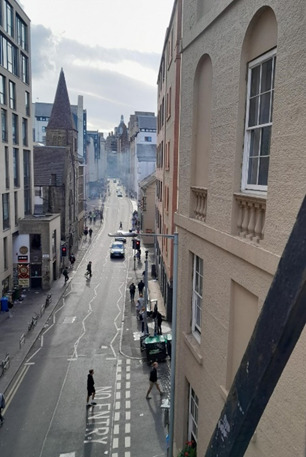
This is the view of Cowgate from the bridge, which give a bit of an impression of how high it is
The bridge was constructed along the line of the paths between buildings on Marlin’s Wynd, Peebles Wynd and Niddry’s Wynd (narrow pathways), and crossed the road at the bottom of the valley, Cowgate. Some buildings were demolished to make the bridge wide enough to be useful. I can find no information on what happened to the poor (extremely poor, and utterly powerless) people whose homes were destroyed by this, but we know the stones were re-used to build the bridge.
The interesting bit, of course, is the spaces that were enclosed. I think the original plan was to use these dark spaces as storage, so floors were built in the enclosed arches, and access was retained. I think it is really impossible now to find if there are any true bits in the stories that accumulated, but they are fun. To start, the plan was for city’s eldest resident – a judge’s wife – to be the first to cross the bridge in a triumphant and thrilling opening ceremony. The obvious flaw in the plan rather spoiled the atmosphere. The lady died a few days before the party. For some reason, the party planners had no plan B, and she crossed the bridge in her coffin (see coffin bridges, I might get to that). This had the effect of making living people a bit uncomfortable about using the bridge, and many preferred to continue to take the steep climb instead. This creepy start probably helped fuel further stories. There have been rumours of all kinds of nefarious uses for these places, as they would have made ideal places for activities that anyone wished to keep out of sight. They start with a craze for the rich to buy edgy fashion items such as hats and shoes, or meetings of the Hellfire Club, for rich men to indulge in drinking, gambling, dressing-up, illicit sex, political conspiracies and other generally disapproved behaviour. Much worse, it is suggested that greedy and uncaring landlords let rooms to the poor and desperate, that children with plague were locked up there to die, and that Burke and Hare hid their murder victims there, and took them though a secret passage to the anatomy department of the university.

One of the underground arches of the bridge
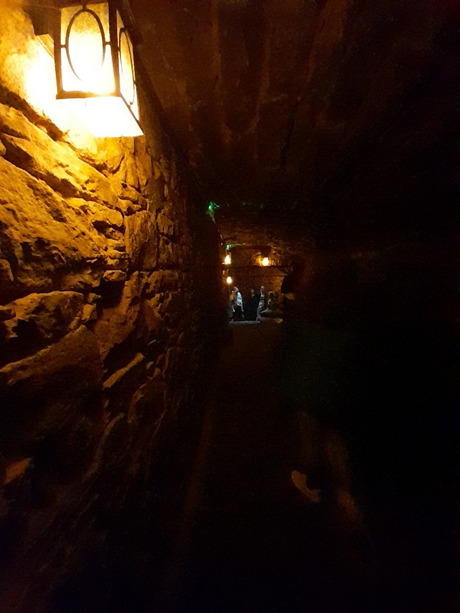
All of this was over in less than 50 years, as the Council recognised the spaces were dangerous, and blocked all the access points, and so it stayed until the 1980s, when the landlord of the Tron pub found a passage entrance in his basement, and began to dig. He excavated enough space for bands to rehearse and perform, and (apparently) for a defecting rugby player, Cristian Raducanu, to hide from the Romanian secret police. You can now take a tour.
0 notes
Video
Glencoe, Scotland, UK
#Blackrock Cottage#Glencoe#Glencoe Mountain Resort#highland#Ladies Scottish Climbing Club#winter#snow#mountains#Buichaillie Etive Mor#Buachaille Etive Mòr#The Buachaille#Scotland#Scottish#scenery#landscape#winter sun#Canon 5D Mk3#Canon 24-105#Mark Mullen Photography#Fort William#Lochaber#UK#united kingdom
49 notes
·
View notes
Photo

Two members of the Ladies' Scottish Climbing Club climbing Salisbury Crags, Edinburgh 1908
#history#historical photograph#Scottish climbing club#ladies' Scottish climbing club#climbing#Womens history#salisbury crag#edinburgh#interesting history#historical photo
55 notes
·
View notes
Text

I posted 529 times in 2021
529 posts created (100%)
0 posts reblogged (0%)
For every post I created, I reblogged 0.0 posts.
I added 4,401 tags in 2021
#goodolddays - 514 posts
#oldphoto - 509 posts
#retro - 496 posts
#victorianchaps - 495 posts
#vintage - 491 posts
#nostalgia - 468 posts
#victorian - 428 posts
#pastlives - 345 posts
#history - 331 posts
#portrait - 324 posts
Longest Tag: 24 characters
#blackandwhitephotography
My Top Posts in 2021
#5

🔸 Edwardian era French postcard of young lady posing in her undergarments considered risqué at the time, but there was certainly far worse available in print. #blackandwhitephotography #monochrome #victorianchaps #portrait #beauty #goodolddays #oldphoto #fashion #vintage #retro #1910s #glamour #risque #edwardian #nostalgia https://www.instagram.com/p/CPq63ANgAdt/?utm_medium=tumblr
113 notes • Posted 2021-06-03 19:58:53 GMT
#4

🔸A Stereograph card depicting a Victorian lady being woken from her nap by her puppy 🐶 taken 1890s #blackandwhitephotography #monochrome #victorianchaps #victorian #retro #goodolddays #oldphoto #victorian #vintage #pastlives #puppy #portrait #nostalgia #snooze #1890s https://www.instagram.com/p/CXHRdMeAfJU/?utm_medium=tumblr
148 notes • Posted 2021-12-05 19:54:49 GMT
#3

🔸 Amelia Van Buren with friend photographed by Thomas Eakins, late 1880s, Metropolitan Museum of Art: Photography. #victorianchaps #vintage #retro #victorian #thomaseakins #1880s #portrait #goodolddays #history #pastlives #oldphoto #cat https://www.instagram.com/p/CSGlfAlgsf7/?utm_medium=tumblr
156 notes • Posted 2021-08-03 06:53:36 GMT
#2

🔸 RARE PICTURE OF A BLACK FEMALE UNION SOLDIER 1862. Her name was Cathy Williams and she had to pose as a MALE to be enlisted at the Time..She was part of the 38 Regiment,Infantry Division and was called a Buffalo Soldier. #victorianchaps #retro #victorian #civilwar #oldphoto #goodolddays #badoldtimes #vintage #americancivilwar #1860s #nostalgia #portrait #pastlives #history https://www.instagram.com/p/CP7edCvAYkZ/?utm_medium=tumblr
190 notes • Posted 2021-06-10 06:17:45 GMT
#1

🔸 Lucy Smith and Pauline Ranken ascending Salisbury Crags, Edinburgh, wearing long, ankle-length skirts, hats, blouses and smart shoes, 1908. The only protection they had was a length of rope tied around each of their waists -no helmets, harnesses, spikes or other modern safety equipment as it wasn't available to them at the time. They formed their own club the Scottish Climbing Club founded in 1908, after being barred from joining the men-only Scottish Mountaineering Club. By 1909 the club had fourteen members. #victorianchaps #goodolddays #edwardian #rockclimbing #retro #edinburgh #scotland #vintage #oldphoto #1900s #nostalgia #retro #victorian #pioneers #pastlives #history (at Edinburgh, Scotland, UK) https://www.instagram.com/p/CMeKpRXADfY/?igshid=xdhe9g2ls63a
271 notes • Posted 2021-03-16 07:32:30 GMT
Get your Tumblr 2021 Year in Review →
18 notes
·
View notes
Photo

Lucy Smith and Pauline Ranken of the Ladies' Scottish Climbing Club, climbing the Salisbury Crags cliff in Edinburgh. Scotland, 1908. Check this blog!
17 notes
·
View notes
Photo

In mountaineering, if we look for private experience rather than public history, even getting to the top becomes an optional narrative rather than the main point, and those who only wander in high places become part of the story.
- Rebecca Solnit, Wanderlust: A History of Walking
**The Ladies Scottish Climbing Club members doing their thing in 1908.
#solnit#rebecca solnit#quote#mountaineering#climbing#femme#mountaineers#edwardian#scottish#outdoors#nature#mountains
86 notes
·
View notes
Photo

Lucy Smith and Pauline Ranken of the Ladies' Scottish Climbing Club, Salisbury Crags. c.1908
(source)
33 notes
·
View notes
Video
youtube
On October 11th 1993, comedian and singer, Andy Stewart, died in Arbroath.
Andy was born in Glasgow, and had aspirations of becoming a veterinary surgeon, although following a performance in a local pageant he decided to train as an actor at the Royal Scottish Academy of Music and Drama.
He became a successful recording artist, with international hits such as Donald Where’s Your Troosers? A Scottish Soldier, The Road to Dundee and Take Me Back, and found further fame as the compere of BBC Scotland’s The White Heather Club, which ran for several years from the mid-1950s.
From the early 1960s onwards, he frequently and successfully toured Canada, the USA, Australia and New Zealand.
In 1959, Andy Stewart signed his first recording contract with the small the label of Top Rank. His first recording, “Donald Where’s Your Troosers?” was a light-hearted, almost throwaway track, during a recording session with his White Heather Group. However Top Rank considered it worth releasing as a single.
“Donald Where’s Your Troosers?” is a comic song about a Scotsman who wears a kilt rather than trousers. It plays on the traditional gag about what people might see when a man is wearing a kilt and not any underwear. Especially when it is windy while walking in a kilt. As such he impresses the ladies when he walks by, frightens the other Highlander men and has rolls in the hay with lassies from London. The song also includes an Elvis imitation of several of the verses near the end of the song. Legend has it Elvis said it was one of the best impersonations of himself he had heard.
Stewart wrote the song in 10 minutes while he sat, trouserless, in the loo of a recording studio. Back in 1960’s Andy Stewart and other Scottish comedians were heard to tell a joke at the time reflecting Scots making fun of themselves: What’s the difference between a Scotsman and a Rolling Stone? A Rolling Stone says, “hey you, get off of my cloud!,” while a Scotsman says, “Hey McLeod, get off of my ewe!”
Into the 1980’s Andy Stewart was becoming a symbol of the “Old Scotland” for many Scots who were embarrassed by perpetual images of haggis, Hogmanay and kilts as representing Scotland. He spent much of the decade touring internationally. But in 1989 “Donald Where’s Your Troosers?” was reissued and climbed to 4 on the charts. Stewart was back in fashion, including in Scotland.
During his career Andy Stewart released 26 studio albums and one live album.
Plagued with ill-health most of his adult life, especially due to high cholesterol levels, Stewart died at the age of 60 in 1993.
Since his death over a have a dozen compilation CD releases have been made available to showcase the work of one of Scotland’s greatest comics.
The video features Andy singing, and telling the extraordinary true story behind the song Campbeltown Loch.
6 notes
·
View notes
Text
Memory (Chibs x Reader)

(i broke my own heart while writing this one. I'd also like to apologise for my grammatical mistakes so yeah :/)
Chibs looked particularly happy that day, as if he had made some big decision.
He came to your house on his bike and knocked on the door three times, holding a big bouquet of roses.
When you opened the door the first thing you saw was the bright red color of the roses.
"Chibs?" You wondered, and he lowered the flowers revealing a big smile.
"Happy Valentine's day, (y/n)" he exclaimed.
The whole thing seemed strange to you. Chibs is not the kind of guy who arranges romantic surprises, but you decided not to think about it too much.
"Happy Valentine's day to you too!" You exclaimed, feeling your cheeks blush.
You made room for him to come in after you took the roses and put them in a jar of water. He sat in your living room and waited patiently for you.
He seemed nervous and pensive almost all the time.
You sat down beside him on the big sofa and he gently stroked your face with his right hand before he kissed you tenderly.
"What do you want to do today?" he asked softly. 'It's the first Valentine's Day we spend together, so I want it to be special." He added.
"Of course." You answered and began to think about it. "How about going to the amusement park?" You recommended then.
Chibs seemed to think about it for a second but then smiled and agreed.
You got up to go to your room but you felt Chibs pulling you down and onto his lap.
"Chibs?"You looked back to see him look at you with such affection and calmness that for a moment you felt a flock of butterflies dancing in your belly.
"You are very beautiful, lass." He told you. He put his face on your neck and closed his eyes letting your perfume flood his lungs.
You felt your legs weaken as his breath hit in your neck.
"I need to get ready" You whispered, and he let you go to your room.
A few minutes later you came back and found him reading a book which you had placed on the little table in the living room.
"Do you like Oscar Wilde?" You asked him, kissing him gently on the cheek.
"It's pretty good." He said, and turned to look at you. "Ready?" he asked.
"Sure!" You answered. He got up and opened the front door for you.
"Ladies first!" He said, smiling.
You climbed onto his motorbike and a few minutes later you arrived at the amusement park. It was full of little children running, playing, laughing, and eating corn and cotton candy.
You smiled at the sight of this.
"Well, what's an old man like me doing here?" Chibs laughed and put his arm round your waist.
"I don't think age matters here!" You laughed.
"So you agree that I am an old man?" He asked, with a serious look on his face.
"What? No!" You exclaimed surprised, but he assured you he was joking.
You walked into the crowd and looked at the little children smiling. Some of them looked at Chibs with admiration and curiosity, but he seemed to enjoy it.
"Shall we go buy popcorn?" you asked him with the glee of a little child.
"Sure!" He laughed.
All this time it seemed to you that something was wrong. His answers seemed to be nervous even though he was smiling.
You stopped walking and held him by the arm.
"What's the matter, lass?"He asked you.
"I should be asking you that" you said calmly. "Is something wrong?" you asked him.
"No, sweetheart, everything is okay." He told you.
"You look very nervous. I'm worried." You insisted.
He seemed to think for a few seconds, and then led you to a part of amusement park, far from the crowd.
You sat opposite from each other and he remained pensive, trying to find the right words to talk to you.
"Listen, (y / n)..." He started saying, "You know what the club business is like..."
"What's the club business like?" you asked curious.
"Dangerous." He said.
"I don't understand, Filip." You sighed.
"Someday I will be just a memory to you and I want to make it a good one." He said at last, leaving you speechless.
"What?" You were left looking at at him in astonishment.
"I'm afraid anything may happen to me, and you'll be left alone... I want you to remember me with a smile on your face." A tear rolled down his cheek.
"I can't believe that..." You said softly.
Chibs held you gently by the arms.
"I love you, kid. I can't risk leaving you alone with any memory that's not good."
You abruptly pushed his hands away from you.
"Don't you dare say that again. You're not going anywhere." You said through your teeth.
"Come on, (y/n). You know how it is, and you know the chances of something happening to me are numerous." He emphasized with his beautiful Scottish accent.
"No!" You yelled. "Stop focusing on the ifs and thinking about the future. All we have is now." You said trying to ignore all the ugly thoughts this conversation brought in your head.
Chibs hugged you, making you feel tiny inside his big arms.
"I'm sorry, baby." He said. He regretted starting this conversation with you, knowing how sensitive you were.
"Don't you ever say anything's going to happen to you. I'm scared." You cried, and held him tighter on your body.
The two of you went back home and spent the rest of the day in bed, reading books and talking about anything but the future.
58 notes
·
View notes
Note
I would love something about chibs partner revealing she’s pregnant with his baby! He was always so protective and caring with jax’s kids and I adore that.

Chibs with children makes me soft. THIS MAN IS ALSO DADDY
*this is taking place after Jax’s death*
- Chibs and his partner have been together for awhile, but him keeping it on the downlow because of all the club stuff.
- He had missed out on his chance to raise Kerriane, and would love to have another chance to raise his own kin.
- Things with the club had started to settle down, and Chibs felt like it was time to try for a family with you. Not like y’all hadn’t been trying unintentionally for a family.
- It had taken a while, but you found out you were pregnant, and waited for the perfect time to surprise Chibs.
- With help from Lyla, and some of the other old ladies, you had created a small leather kutte that has a patch that says “future president”.
- You wanted to keep telling Chibs a lowkey private thing, I feel like Chibs is a lowkey private man anyway. So you tell him when he comes home from doing club stuff.
- He would cry, no doubt, after all the loss he has been through, losing Jax, the kids moving away, he was emotional. But it’s happy tears (lol. happy).
- He would go into protective papa bear mode right away. With what he does being so dangerous, he no doubt would be over protective from the moment he opened the gift and saw the ultrasound.
- Chibs would try his hardest to be at every doctors appointment. He wasn’t there for Fiona when she was pregnant with Kerriane, and that guilt he has always carried, and didn’t want a repeat of it.
- He’d also be the type of dad to worry if he would be good enough. He is older, and his job isn’t the typical 9-5. You would have to reassure him that you have everything you want, and he is going to be the best dad ever.
- Chibs would read all the pregnancy books, and be randomly spitting knowledge like: “The babe is the size of a grapefruit,”
“The baby can hear dull sounds,”
“Your breast will grow 5 times the size they normally are,”
“Sex is good for pain relief,”
“Filip!”
“I’m just saying!”
- He would be the type of dad who would lowkey freak out when you say your water broke, but doesn’t want you to be scared. He’d triple check you have everything when you go to the hospital.
- Chibs would be at your beck and call, for whatever you need. Ice chips, he’s on it. Want to the nurse, he’s already calling for her. Want him to rub your back, he’s climbing in bed with you.
- While you’re laboring, he’d helping you breathe through the contractions, that sweet scottish accent helping you calm down. He’d be the type to help you walk laps around the labor floor.
- When it comes time for you to deliever, he’s right next to you, hand in hand, ready to take any pain you power on to him. He’d be whispering sweet, encouraging things in your ear.
- When you hear that first cry, he’d be a crying mess, trying to hide his face in your shoulder as he cries. He’d be crying even more when the nurse says “it’s a girl!”
- OMG! Imagine, you’re sleeping after the delivery and Chibby is sitting in a rocking chair, and he’s whispering to your daughter:
“No boy is ever going to hurt you, you know why? Because all your uncles know how to shoot a gun, and hunt someone down, especially uncle Happy.”
- plus! if you didn’t want to have a hospital birth, and wanted a home birth, he’d be totally supportive of that! He’d be right by your side, never wanting to leave.
47 notes
·
View notes

